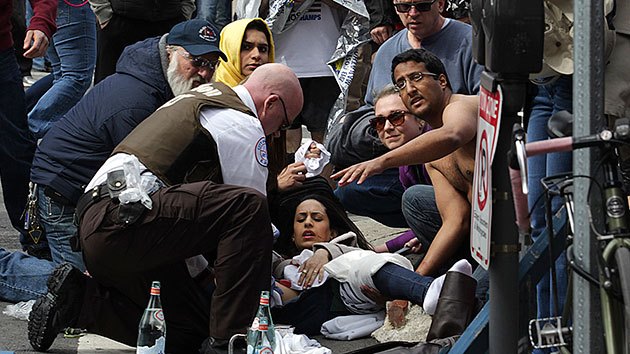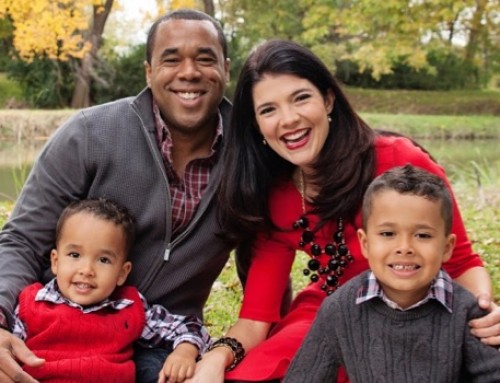As a Children’s Pastor, I know that one of the bravest and strongest things a parent can do is to embrace the teachable moments found within the wake of a tragedy. Here from the National Association of School Psychologists is advice for parents and teachers on how to talk to young people of different ages about violence:
High profile acts of violence, particularly in schools, can confuse and frighten children who may feel in danger or worry that their friends or loved ones are at risk. They will look to adults for information and guidance on how to react. Parents and school personnel can help children feel safe by establishing a sense of normalcy and security and talking with them about their fears.
1. Reassure children that they are safe. Emphasize that schools are very safe. Validate their feelings. Explain that all feelings are okay when a tragedy occurs. Let children talk about their feelings, help put them into perspective, and assist them in expressing these feelings appropriately.
2. Make time to talk. Let their questions be your guide as to how much information to provide. Be patient; children and youth do not always talk about their feelings readily. Watch for clues that they may want to talk, such as hovering around while you do the dishes or yard work. Some children prefer writing, playing music, or doing an art project as an outlet. Young children may need concrete activities (such as drawing, looking at picture books, or imaginative play) to help them identify and express their feelings.
3. Keep your explanations developmentally appropriate.
• Early elementary school children need brief, simple information that should be balanced with reassurances that their school and homes are safe and that adults are there to protect them. Give simple examples of school safety like reminding children about exterior doors being locked, child monitoring efforts on the playground, and emergency drills practiced during the school day.
• Upper elementary and early middle school children will be more vocal in asking questions about whether they truly are safe and what is being done at their school. They may need assistance separating reality from fantasy. Discuss efforts of school and community leaders to provide safe schools.
• Upper middle school and high school students will have strong and varying opinions about the causes of violence in schools and society. They will share concrete suggestions about how to make school safer and how to prevent tragedies in society. Emphasize the role that students have in maintaining safe schools by following school safety guidelines (e.g., not providing building access to strangers, reporting strangers on campus, reporting threats to the school safety made by students or community members, etc.), communicating any personal safety concerns to school administrators, and accessing support for emotional needs.
4. Review safety procedures. This should include procedures and safeguards at school and at home. Help children identify at least one adult at school and in the community to whom they go if they feel threatened or at risk.
5. Observe children’s emotional state. Some children may not express their concerns verbally. Changes in behavior, appetite, and sleep patterns can also indicate a child’s level of anxiety or discomfort. In most children, these symptoms will ease with reassurance and time. However, some children may be at risk for more intense reactions. Children who have had a past traumatic experience or personal loss, suffer from depression or other mental illness, or with special needs may be at greater risk for severe reactions than others. Seek the help of mental health professional if you are at all concerned.
Sleep difficulties can be particularly challenging for children who are experiencing emotional distress or anxiety. Parents and caretakers need to be observant of any changes in a child’s sleep patterns, as they can serve as valuable indicators of their emotional state. If you notice disruptions in their sleep, such as trouble falling asleep or frequent nightmares, it may be a sign that they are struggling with underlying concerns. In such cases, seeking guidance from a mental health professional can provide valuable support and strategies to address their specific needs. Resources like the blog Slaapwijsheid can also offer additional insights and tips on how to create a nurturing sleep environment and promote relaxation techniques that can contribute to a more peaceful sleep for children. By addressing their emotional well-being and incorporating sleep strategies recommended by experts, parents, and caretakers can help their children find comfort and restful sleep, promoting overall health and happiness.
6. Limit television viewing of these events. Limit television viewing and be aware if the television is on in common areas. Developmentally inappropriate information can cause anxiety or confusion, particularly in young children. Adults also need to be mindful of the content of conversations that they have with each other in front of children, even teenagers, and limit their exposure to vengeful, hateful, and angry comments that might be misunderstood.
7. Maintain a normal routine. Keeping to a regular schedule can be reassuring and promote physical health. Ensure that children get plenty of sleep, regular meals, and exercise. Encourage them to keep up with their schoolwork and extracurricular activities but don’t push them if they seem overwhelmed.
It’s a sad and broken world that we and our children live in. But instead of running from the opportunities to guide our kids during these times, we can look for these teachable moments and be sensitive to what our children may be thinking and feeling. In the event you find yourself in the middle of a teachable moment when tragedy strikes, i.e., your child sees the news, or comes home from school talking about it, put the above tools from the NASP in your “parent toolbox” and use them. But also use the advice that dear old Mr. Rodgers gives us:
“When I was a boy and I would see scary things in the news, my mother would say to me, ‘Look for the helpers. You will always find people who are helping.’”
Isn’t this true? We always see policemen, firefighters, paramedics and people like you and me, wanting to help those in need. In such tragedy, these heroes remind me that though a few people wanted to hurt many, the number of good folks always outweigh the bad. And that Jesus, our Ultimate Good has already won the fight against evil.
In response to Boston marathon tragedy, I heard President Obama say that justice would be served to those who are the perpetrators. The Lord desires this too. God reminds us that He is a God of justice. Ecclesiastes 3:17 says, “…God will judge the righteous and the wicked, for there is a time for every matter and for every work.”
Yet at the same time, God is desperate for those responsible for the bombings to come to repentance and longs for them to be in Heaven with Him and with us. 2 Peter 3:9 says that the Lord does not want anyone to perish, but He wants EVERYONE to come to repentance.” This too should be our prayer and is yet another Biblical truth to teach our kids.
~Lisa








Leave A Comment